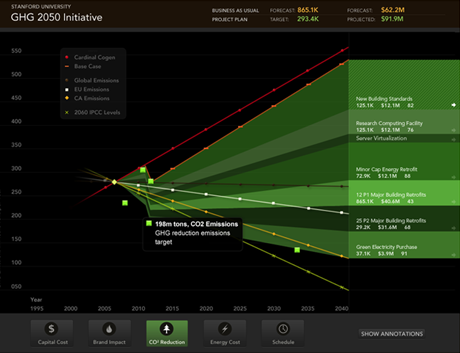Energy is the industry that IT forgot — or at least until recently. While sectors as varied as finance and healthcare, entertainment and communications have roared ahead with digitization, automation, and analytics, the energy industry has not evolved as rapidly. Despite this fact, it's clear that the future of energy lies in software. In both conservation and sustainability, software offers great possibilities for innovation — enabling companies to understand consumption trends, make better decisions about energy usage, and improve efficiency and performance over time.
Last week, at the Massachusetts Technology Leadership Council seminar "New Tools for the Energy Challenge", panelists discussed the opportunities and challenges facing the fledgling energy software space. The panel, moderated by Gabe Cole, SVP Transformation Services at technology consulting firm Telwares, included: Badri Raghaven, CTO of FirstFuel; Ganesan Ravishanker, CIO of Wellesley College; Lillian Smith, Principal User Experience Designer at Autodesk; and Kevin Johnson, CEO of Outsmart Power Systems.
The panelist discussion revealed an industry undergoing deep and sometimes difficult transformation. When it comes to energy, there is little in the way of open data standards regarding consumption, and public utility companies act as gatekeepers to that information. As a result, a large part of the challenge of analyzing and optimizing energy consumption, comes in finding the right data. And there's no doubt that access to emerging data resources will be a major part of addressing energy issues in the future.
OutSmart Power Systems — an energy analytics company based in Natick, Massachusetts — solves the data problem by measuring energy consumption at the individual piece of equipment level. The company's specialized sensors can turn a building's existing breakers into smart nodes and transform the electrical wiring infrastructure into a power management network. Sensor data transmitted from each electrical panel is stored in the cloud, where it can be accessed and analyzed. The company's software enables building managers to measure and visualize equipment performance, electrical infrastructure, and energy costs by providing detailed information about where and how much electricity is being used, in real time. With this type of information, managers can baseline their performance and make appropriate changes. In the grocery and food vertical, for instance, OutSmart's aggregated data about refrigerator compressors is being used by facilities managers to benchmark and validate performance based on manufacturer's specifications.
While OutSmart provides circuit and individual equipment detail for energy consumption analysis, FirstFuel approaches power usage assessment at the commercial building level. FirstFuel's platform is designed to scales across entire portfolios, providing building owners and managers with insights into energy consumption trends and opportunities for immediate savings in their properties. For this analysis, FirstFuel's inputs include electrical consumption data from the utility, local weather, and GIS building information. The analytics software distills the raw data into weather and occupancy related loads, end-use consumption, and daily usage profiles which are incorporated into a Remote Building Assessment revealing how efficiently energy is used in each building. FirstFuel benchmarks end-use energy performance, provide customized operational and retrofit recommendations, and monitors and verifies savings over time.
While OutSmart and FirstFuel use consumption data to provide energy analytics for benchmarking and optimization of buildings and equipment as they are currently configured, Project Vasari, a software technology preview from Autodesk Labs, simulates energy saving components in a building's design phase. Project Vasari is a design tool for creating building concepts with integrated energy modeling and analysis features, providing architects with insight into opportunities for optimizing energy consumption.
It's clear that the design, monitoring, and analysis of energy usage across commercial buildings and facilities is still in its nascent stages. From data access to interoperability to standards, the sector has a long way to go. But the opportunities for software technology to make an impact on the energy sector, especially in the area of sustainability and conservation, are tremendous.
Involution has designed and prototyped information visualizations for Stanford University's sustainability initiatives, and we anticipate that the need for software design and development in the energy sector will only grow, as we come to the conclusion that our planet's resources, no matter how generous, are not infinite.

Energy use and green technology are integral to the future of business and society. Involution created this prototype to help an energy customer envision a powerful new software service.